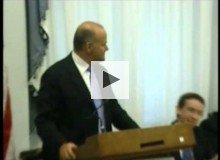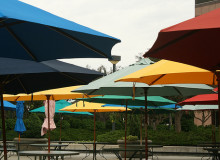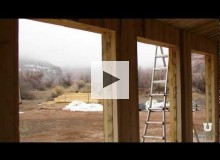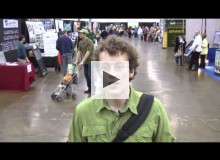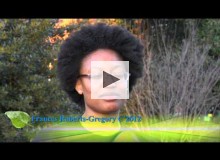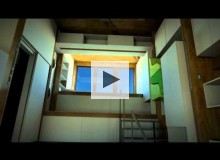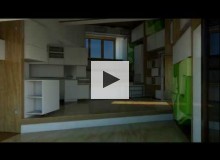Green
Environmental and Energy Study Institute
On October 2, 2012, the Environmental and Energy Study Institute (EESI) held a briefing on the growth of plug-in electric vehicles (PEVs) in the United States and on efforts to spur greater transport electrification. The briefing discussed how... Read More
Urbanization is bad for the planet, right? Wrong. At least it doesn't have to be. Dr. Guanghua Wan of the Asian Development Bank presented research at George Washington University that shows positive effects of a growing urban population. With the... Read More
Why do people use umbrellas? To shade themselves from the heat of the sun and to shelter themselves from rain! My plan is to add another roof above the existing roof on my house, leaving about six inches to a foot of airspace between the two roofs... Read More
ITAC, University of Utah
In 2008, the pink bark beetle, an invasive species, killed millions of trees in Colorado. From these dead trees, researchers at the University of Utah have created interlocking cross-laminated timber, a building material that doesn't require any... Read More
Environmental and Energy Study Institute
The Environmental and Energy Study Institute (EESI) held a briefing that challenged widely held assumptions about renewable energy and the infrastructure needed to connect it to the grid. The Midwest’s steady winds could, in theory, power the entire... Read More
Minnesota 2020
The Living Green Expo seeks to turn values into actions to achieve the highest quality natural environment for Minnesotans through (1) presentation of products, services, information and other resources that promote healthier, more sustainable... Read More
Spelman College's vision is to build a college that will thrive for the next 100 years, and the way to do that is through sustainability.
American Society of Landscape Architects (ASLA)
Inhale, exhale! Unless the air is dirty, that is. Cleaning up the air is a problem that many cities face. The American Society of Landscape Architects says that by planting more trees and creating urban forests, cities can be a cleaner and... Read More
SCIArc & Caltech
What will the homes of the future look like? How will we live in them and how will they occupy space and use precious resources? CHIP has a vision, watch and see how it works!
SCIArc & Caltech
CHIP'S Architectural concept is driven by the two sides of the net zero equation: energy production and energy consumption. Watch to find out how Team California makes the two sides meet!

